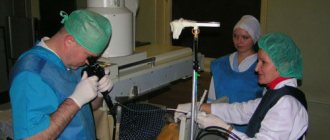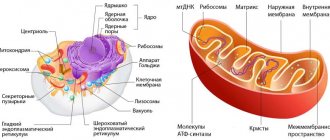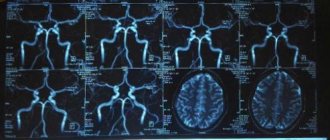Scientific editor: M. Merkusheva, PSPbSMU named after. acad. Pavlova, medical practice. March, 2021
Synonyms: PSA total, prostate-specific antigen total, Prostate-specific antigen total, PSA total.
Prostate specific antigen (PSA) is secreted by the epithelial tissues of the prostate gland. Its purpose is to naturally liquefy sperm. Therefore, normally, PSA is always present in the blood of a healthy man, but its concentration should not go beyond the established normal values. Otherwise, we can talk about the development of pathological changes in the structure and functioning of the prostate.
A test for total PSA in plasma is the most reliable and indicative in the diagnosis of benign and malignant prostate diseases and other pathological changes (inflammatory processes, infection, proliferation of pathogens, etc.). The main purpose of the study is to diagnose oncology.
General information
Prostate specific antigen is a glycated protein, a small part of which, after production by the prostate gland, is released into the bloodstream, where it circulates in 2 states - free and bound. The combination of both of these fractions is the total PSA. Their ratio is approximately 9:1. With prostate carcinoma (cancer), the level of the bound form in the blood increases, which leads to a decrease in the ratio between free and total PSA.
An increase in the level of antigen in plasma is observed in the presence of benign or malignant diseases, inflammatory and infectious processes, mechanical and thermal injuries, as well as after certain therapeutic and diagnostic procedures. A temporary release of the component is caused by ejaculation, after which its level stabilizes again after 2 days.
With age, the concentration of total PSA increases, and the percentage of the free fraction, on the contrary, decreases. A PSA test is recommended annually for men over 50 years of age (age risk group). Early screening (before 40 years of age) is indicated for patients with a burdened medical history (malignant processes in first-line relatives).
Interpretation of test results is always carried out simultaneously with other diagnostic studies: analysis of biological fluids, rectal palpation of the prostate, MRI, biopsy, ultrasound, radiography, etc.
PSA is able to inhibit the migration, proliferation and invasion of endothelial cells in the tumor and, accordingly, slow down its growth. This function may partly explain the naturally slow progression of prostate cancer.
When should you think about getting a PSA test?
Doctors in different countries disagree about the optimal age for taking this test. In the United States, they believe that before a PSA test you should consult a doctor, weigh all the risks and benefits, and only make a decision after consultation.
In Russia, the most common point of view is that it is recommended to undergo research after 40–45 years of age without special medical indications. However, if one of your close relatives has had a malignant tumor of the prostate gland, the risk of getting sick increases 10 times, and getting tested after 40 years is necessary. Symptoms that might make you consider getting a PSA test are related to any urinary problems, such as pain or burning, frequent urination at night, or blood in the urine or semen.
“Only 12 percent know what prostate-specific antigen (PSA) is, the most important test for detecting prostate cancer. Only one and a half percent of men ask their doctor to perform this test for them. But it is no coincidence that it is included in the list of mandatory medical examinations: every man after 45-50 years of age should know his PSA number. If it is more than 4.0, then a biopsy is necessary because the risk of prostate cancer is high. The doctor prescribed this test - you need to go and take it. If you didn’t appoint it, this happens; you have to demand a referral yourself,” said Dmitry Yuryevich Pushkar, Academician of the Russian Academy of Sciences, professor, Honored Doctor of the Russian Federation, chief urologist of the Ministry of Health of the Russian Federation, head of the Department of Urology at Moscow State Medical University named after. A.I. Evdokimov.
Indications
The main purpose of determining total PSA in plasma is screening for prostate cancer (PCa), including as an additional marker based on the results of a rectal examination.
The study is also carried out to determine the stage of the cancer process, the likelihood of relapse or remission, metastasis, general prognosis, which is important in the first 6-18 months of treatment, and making a decision on whether to perform a prostate biopsy. The test allows you to monitor the effectiveness of the chosen treatment regimen (chemo-, drug or radiotherapy, hormone replacement therapy, physical therapy, surgery, etc.).
In what cases is analysis prescribed:
- Suspicion of benign or malignant processes, inflammation of the prostate, structural changes in its tissues;
- Age over 50 years (mandatory screening);
- Age over 40 years (if there are close relatives with pelvic cancer);
- Prostatic hyperplasia;
- The patient complains of difficult, painful and frequent urination;
- An increase in the size, consistency and structure of the prostate gland according to rectal examination or ultrasound.
The interpretation of the analysis results is carried out by an oncologist, surgeon, urologist, and therapist.
Tumor marker CA 15-3 (Mucin-like glycoprotein)
or breast tumor marker. An indicator of the course of the disease and the effectiveness of therapy for breast carcinoma. Normally, the level of CA 15-3 is 0-22 U/ml. Tumor marker CA 15-3 is effective in determining relapses. Some elevation of the marker may also occur during pregnancy.
Increased SA level 15-3
Breast carcinoma (a particularly high level is observed in late stages and in the presence of metastases),
Bronchogenic carcinoma,
Stomach cancer,
Liver cancer,
Pancreas cancer,
Cancer of the ovaries, endometrium, uterus (late stages of tumor development).
Normal total PSA values
Important! Standards may vary depending on the reagents and equipment used in each particular laboratory.
That is why, when interpreting the results, it is necessary to use the standards adopted in the laboratory where the analysis was carried out. You also need to pay attention to the units of measurement. For a long time it was believed that total PSA should be in the range from 0 to 4 ng/ml. But according to medical statistics of recent decades, a malignant process can begin and progress at lower PSA levels (up to 2.5 ng/ml).
The current normal values for the total PSA test are presented in the table:
| Age, years | Total PSA norm, ng/ml |
| 40-49 | 0-2.5 |
| 50-59 | 0-3.5 |
| 60-69 | 0-4.5 |
| 70-79 | 0-6.5 |
A general PSA test is always combined with the determination of its free form. The latter is distinguished by the fact that it does not bind to other proteins and circulates in its original form (as it was produced by prostate epithelial cells).
As a rule, all circulating forms of PSA are determined in one analysis sample, after which their mathematical ratio is established as a percentage. This information is especially necessary in a situation where total PSA reaches 10 ng/ml, which may be due to an increased risk of severe inflammatory processes in the prostate and the appearance of malignant neoplasms. When the ratio of free to total PSA is more than 25%, the oncologist diagnoses non-malignant pathologies, while a ratio of less than 15% is an additional marker for determining cancer.
To assess pathological risks, namely, when the PSA threshold of 4 ng/ml is exceeded, the ratio (index) of the required indicators is calculated using the formula:
free PSA / total PSA * 100%
A result of more than 25% indicates a benign process or a favorable prognosis for various inflammatory diseases, structural changes in the prostate, etc. Values up to 10% indicate a high risk of developing oncology.
Important! The interpretation of the results is always carried out comprehensively. It is impossible to make an accurate diagnosis based on only one analysis.
Tumor marker CA 125
The main marker of ovarian cancer and its metastases. Normally, the concentration of tumor marker in the blood is 0-30 IU/ml. Elevated CA 125 levels, more than 30 IU/ml, may indicate malignant diseases:
ovaries (mainly),
uterus (inner layer - endometrium),
mammary gland.
pancreas (in combination with CA 19-9)
Preparation:
Fasting is when at least 8 hours (preferably at least 12 hours) pass between the last meal and the blood draw.
Physiologically, an increase is observed during pregnancy and during menstruation.
Total PSA is elevated
The probability of detecting oncology, depending on the excess of the norm:
- up to 10 ng/ml - suspicion of prostate cancer;
- 10-20 ng/ml - high risk of prostate cancer;
- 20-50 ng/ml - risk of disseminated prostate cancer;
- 50-100 ng/ml - high risk of metastases to lymph nodes and distant organs;
- more than 100 ng/ml - always metastatic prostate cancer.
Other conditions in which total PSA levels increase:
- Ischemia or infarction of the prostate;
- Hyperplasia of prostate tissue, changes in its structure or volume;
- Diseases of the genitourinary organs;
- Prostatitis in acute or chronic form;
- Benign neoplasms (cysts, adenomas, polyps, etc.);
- Cancer processes (80%).
Why is there an erroneous result?
False-positive test results can be caused by the following factors:
- recent manipulations on the prostate gland (massaging, rectal examination and palpation, transrectal ultrasound, biopsy, etc.);
- cystoscopy, bladder catheterization;
- urinary tract infection;
- intense physical activity (biking, horse riding);
- sexual intercourse and ejaculation;
- taking certain medications (allopurinol, finasteride, cyclophosphamide, methotrexate, androgen antagonists).
A PSA test is prescribed no earlier than a week after these factors have been eliminated.
Preparing for analysis
The procedure is carried out strictly on an empty stomach, but is not tied to a specific time of day. A PSA test can be taken in both public and private clinics. The reliability of the result largely depends on the patient’s preparation. The day before the procedure is necessary.
- Avoid everything fried, salted and smoked. Such food provokes the active production of substances similar to tumor markers.
- Eliminate physical and emotional stress. A stressful situation can radically change the functioning of the enzymatic system. You can't ride a bicycle.
- Do not smoke at least one hour before blood collection. Don't drink alcohol for at least a day.
- Medication intake is limited for two days. If this is not possible, be sure to notify the doctor about the names of the drugs.
- Avoid sexual intercourse for two days before the test.
- It is important that before the procedure at least 10 days have passed since the last prostate massage. After prostate surgery, PSA is taken no earlier than six months later.
In the referral for analysis, if necessary, indicate the presence of a confirmed diagnosis of prostate cancer, as well as information about previously performed medical procedures.
The study is carried out in a complete ELISA laboratory, which has a shaker-incubator, a washing device and a microplate photometer. Kits for PSA determination are produced by a number of Russian and foreign manufacturers. At the same time, domestic devices are not inferior to imported analogues in terms of accuracy. In terms of cost of analysis, they are many times more economical.
Lowering values
A reduced level of a specific antigen does not indicate a deviation, but a minimal level of risk of developing malignant neoplasms. When examined over time, a decrease in total PSA less than 2 ng/ml indicates the effectiveness of treatment measures and a favorable prognosis.
In obese men, total PSA levels may be reduced due to an increase in the estradiol to testosterone ratio and hemodilution (a decrease in the number of red blood cells in the plasma associated with an increase in total plasma volume).
Tumor marker CA 19-9
tumor marker of the pancreas, gall bladder, marker of pancreatic carcinoma. A blood concentration of 40 IU/ml or higher is considered pathological. Elevated levels of this marker are a poor prognostic sign in patients with colon and rectal cancer.
Increased CA level 19-9:
Pancreas cancer,
Stomach cancer,
Colon cancer,
Rectal cancer
Gallbladder cancer
Dynamics of changes in total PSA levels over time, PSA V
An important criterion for assessing the pathological process is the dynamics of changes in the level of total PSA over time. This indicator is called PSA V. The increase in PSA levels in prostate cancer occurs at a much faster rate than in BPH (prostate adenoma) or chronic prostatitis. Sarklinik in Saratov believes that the limit for the annual increase in PSA levels over 1 year should be no more than 0.67 ng/ml . That is, the increase in PSA in one year should be a maximum of up to 0.67 ng/ml, compared to the previous year. Over 6 months (if PSA is performed once every 6 months), the increase in PSA level should be no more than 0.33 ng/ml .
Dear patients, if you want to receive detailed information on the following issues, please contact us for a personal consultation in Saratov: what is a tumor marker analysis of a dog, where is a dog’s blood test performed and its decoding , what is the norm, how is the test carried out, where can a dog’s blood test be done and passed, when to get the results, how to prepare for the dog test , what is its cost and price, how to deal with impotence , how to treat early ejaculation? The PSA blood test is a highly informative screening test!
If you are undergoing a routine examination and you are over 45 years old, then take: total PSA, free PSA, prostate health index .
Photo: Rob3000 | Dreamstime.com\Dreamstock.ru
If you have any questions related to PSA, total PSA, free PSA, prostate specific antigen, what is multiparametric MRI of the prostate (mpMRI), PIRADS (Prostate Imaging Reporting and Data System), ask your doctor on the website sarclinic.ru!
Related posts:
Prostate massage and digital rectal examination of the prostate gland
Chlamydia in men, women, signs, symptoms, treatment in Saratov
Why is there discharge from the penis, itching, pain, dripping pus, blood, sperm, urine?
Prostate gland sizes, prostate size, normal sizes, normal, volume, volumes
Thrush in women, men, causes, symptoms, treatment, how to get rid of thrush








